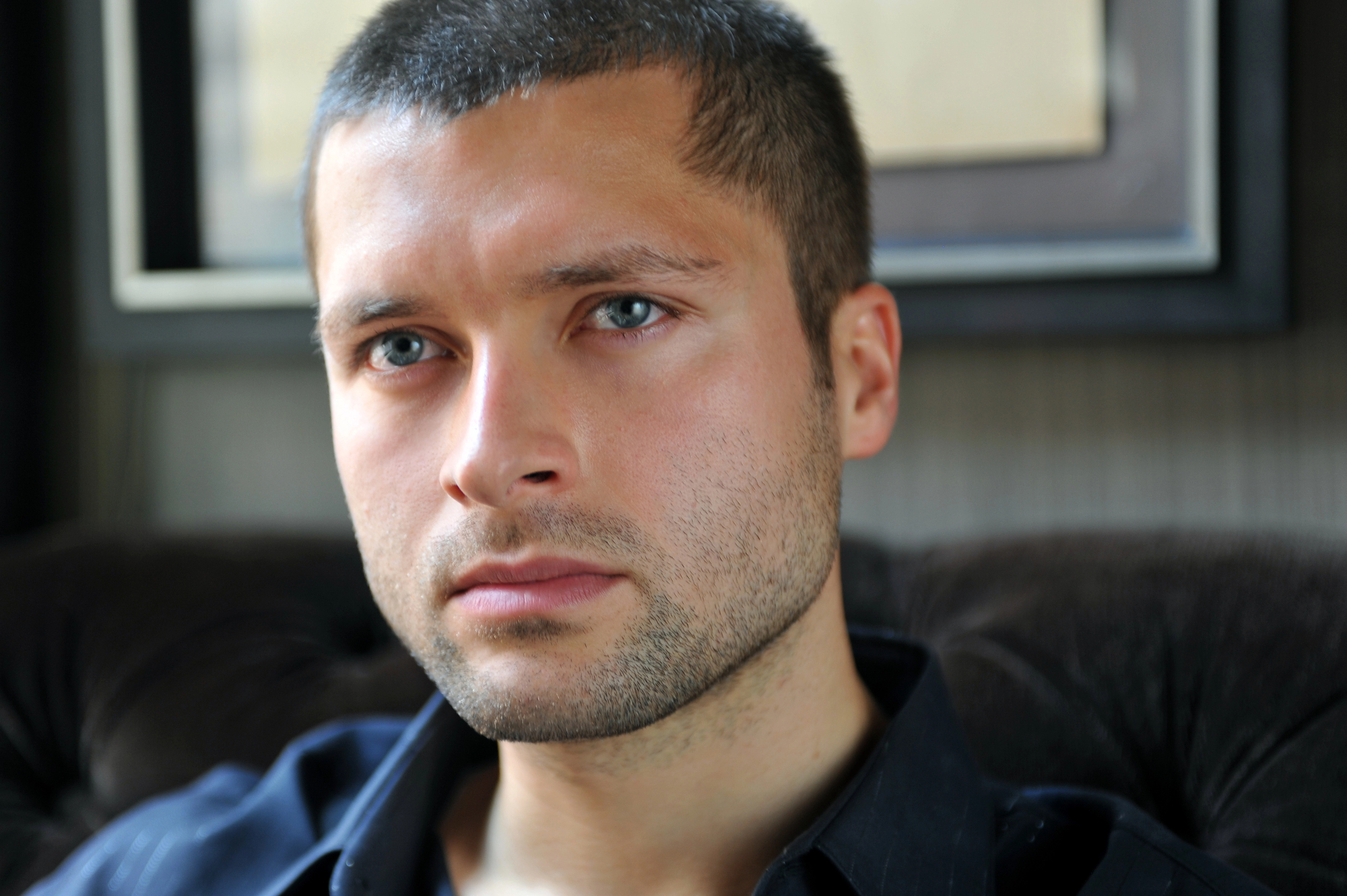Are You Easily Triggered?

Learning how to react in a measured and respectful way will mean you don’t harm relationships or sacrifice your inner peace for the sake of something that most likely matters far less than you think it does in the heat of the moment.
Because let’s face it, having an emotional meltdown can not only be embarrassing, it can cause all sorts of problems in your life.
That is not to say that negative emotions are wrong or to be avoided. They are not. Anger and sadness are valuable emotions that must be felt to allow for proper catharsis.
The problem comes when you start basing your decisions on the difficult emotions you are experiencing. Or, even worse, you snap into a rage that ends with you yelling at someone, throwing something, or punching a wall. These behaviors are unhealthy, abusive, and self-destructive. But they can be avoided.
In the 5 minutes it’ll take you to read this article, you should develop a solid grasp of the steps you can take to be less reactive to every little thing you encounter in life.
1. Identify and recognize your emotional triggers.

A bad emotional reaction is frequently caused by a “trigger.”
The word trigger is often watered down and thought of negatively thanks to the current social and political environment. But, in the mental health sphere, trigger is an important word.
Essentially, an event triggers a reaction. That may be anything from mental illness or unwellness to an emotional reaction. Understanding your triggers is important in managing your emotions and mental state.
How do you identify a trigger? Consider the last time you experienced an unwanted emotion. What actually caused the emotion? There’s your trigger.
For example, you start talking to your spouse about finances, the conversation goes nowhere, and you start feeling increasingly frustrated. Before you know it, you are screaming at each other.
The trigger would be that particular conversation. Finding a new way to have those difficult conversations would help you avoid that trigger.
2. Try to identify the underlying cause of your emotions.

So, you had an experience that triggered your anger. You’ve identified the experience that triggered your anger. Now the next question to ask is, “Why did this particular experience cause me to become emotional?”
What underlying circumstances led you to respond in the way that you did? Can you identify the root cause of that emotional response?
It may not actually be an emotion. Instead, your situation or environment may cause an unhealthy emotional reaction.
For example, suppose you’re in a home where everyone is angry, fighting, and screaming at each other. In that case, you may also have angry reactions based on that environment.
3. Set boundaries that will shield your triggers.

Boundaries are an essential component of protecting your mental and emotional health.
The purpose of boundaries is to limit your exposure to things that might trigger you and cause you to experience unwanted emotions, create bad situations, or explode with situational anger.
Consider your triggers. Are they people? Situations? Certain subjects of conversation? What causes an emotionally reactive response? Now, consider how you’ll protect yourself from those triggers.
Can you avoid certain conversations? Can you minimize contact with or cut those triggering people out of your life? Can you avoid or change situations that only cause negative feelings?
Sometimes a boundary is just learning to walk away from things that worsen your life and mind.
4. Try box breathing.

There is some age-old advice that suggests “counting to ten” or “deep breathing” can help you to calm your emotions. This is to give yourself time to regain control of your emotions in the moment so that you don’t do or say something you regret.
Both of these things are actually small meditation techniques that may help you clear your mind and emotions.
Box breathing is a fantastic brief meditation technique. Inhale for four seconds, hold your breath for four seconds, exhale for four seconds, hold your breath for four seconds, and repeat until you feel calmer.
Count off the seconds in your head and stay focused on the count instead of what you’re experiencing.
5. Practice mindfulness and develop self-awareness.

Mindfulness is a common buzzword in the self-help sphere. Alongside mindfulness walks self-awareness.
But what does it mean to be mindful? Well, to be mindful is to be right here, right now, in this present moment.
It’s not dwelling on the past. It’s not worrying about the future. It’s right now.
Mindfulness is powerful because when you are rooted in the right now, you can respond more effectively to what’s going on presently.
And that’s where self-awareness comes into the picture. You can interrupt your negative emotions by understanding your trigger and responding immediately. This will allow you to respond rather than react.
For example, you may be in an argument and getting frustrated. Once you’ve identified your emotion, you can ask the other person to pause the argument so you can cool off. Come back to it 15 minutes later, and you’ll likely find that you are both calmer.
6. Reframe your thoughts from negative to positive.

There is a piece of common advice to reframe your negative thoughts and emotions into positive ones. The way you do that is to try to look at the problem from a different angle.
Let’s say you’re having relationship problems. You’re fighting back and forth, arguing, and it’s not going anywhere. The two of you seem to be going around in circles.
You can view this one of two ways: either you will keep fighting until you break up, or it can become a challenge for the two of you to overcome.
Couples are faced with challenges that can make or break a relationship. Sure, the two of you may not be able to find a resolution on your own. Maybe you need an outside, neutral party to mediate the situation so you can get through the problem, find a resolution, and grow as a couple.
Conflict isn’t always bad. Sometimes it’s a challenge to overcome and strengthen.
7. Avoid making decisions when you are emotional.

Negative emotions happen, and that’s okay. What’s important is that you avoid making important decisions when experiencing those emotions.
It’s unreasonable to say, “never make decisions while you’re emotional,” because that’s unrealistic.
Still, you can dive into your emotions and ask yourself, “Am I overreacting?” That may help you determine if you are in the right mental space to make important decisions.
Still, try to set aside your decision-making until your mind is clear and free from those negative emotions.
In that case, you can avoid making snap decisions that can hurt you. This is another means to allow you to respond rather than react to a situation.
8. Use “I” statements to try to keep emotions quiet.

The traditional advice of using “I” statements is also helpful with emotional management.
Not only are you considering your own emotions in doing so, but you’re also communicating with another person in a way that is not combative.
For example, “I feel anxious when you leave me waiting for a response to my texts,” is more likely to get positive results than “Well, you just ignore my texts all the time!”
When spoken in anger, that last example is a surefire way to escalate the situation from bad to worse. It’s not seeking to meaningfully communicate or manage emotions. It’s just an angry comment that will cause the listener to pull back onto the defensive, perpetuating the argument.
9. Practice empathy and try to understand from the other person’s perspective.

Life is difficult for many people. There are so many painful circumstances and situations that we all need to navigate. And, unfortunately, we don’t always handle that well. Fear, sadness, and frustration are not emotions people typically want to entertain or have time for.
So, instead, those feelings often come out as anger.
The unfortunate side effect of anger being such a common emotion is that it causes defensiveness and more anger, which fuels more negative emotions, creates anger, and perpetuates itself.
Try to practice empathy. Consider that the person you’re conversing with is probably dealing with a lot in their life, just like you, and they may or may not be handling it well. Doing so allows you to extend some more grace and patience.
Empathy allows you to shrug off their anger as an expression of what is happening inside them, not an attack on you.
After all, you don’t typically find happy, peaceful people swimming in anger. That may help you keep your emotions under control.
10. Challenge your negative beliefs about yourself and the world.

The negative beliefs we hold fuel negative emotions. That seems like an obvious statement when it’s spelled out, but far too many people do nothing with it.
How many people dwell in their negative thoughts, emotions, and beliefs without ever trying to change them? You cannot develop a positive, healthy mindset with negativity. They can’t live in the same space.
That means you must start challenging your negative beliefs about yourself and the world. Consider how you might shift those beliefs to neutral or positive.
A good way is to look at positive media about your negative feelings. The news and a lot of social media are overly negative. You have to try to find positive media that can help.
11. Schedule relaxation.

The great benefit of learning relaxation techniques is they can provide a regular benefit when done consistently.
So, you don’t just want to do them when you feel emotional or agitated. Instead, you want to regularly meditate, practice yoga, journal, enjoy hobbies, or whatever else it might be that helps you relax.
Of course, that’s easier said than done. People are busier than ever nowadays. Still, carve some time out of your schedule wherever you can find it and make relaxation a regular part of your routine.
12. Embrace self-care.

Self-care comes in many forms and flavors. Yes, you have relaxation techniques that can help you quiet your mind and emotions. But eating healthy, sleeping consistently, and exercising regularly are also important.
In addition, most people have an optimal way of life that jives well with the needs of their bodies and mind.
Living in tune with yourself can greatly lessen extreme emotions, foster peace, and allow you to better control your reactions.
It’s no great secret that people can become quite unsettled when they’re feeling “hangry,” and they will likely be cranky and impatient if they don’t get enough sleep. So prioritize self-care so you better fulfill your basic needs.
And if you find that you’re having a hard time managing your emotions, do consider speaking to a therapist about it. Managing your emotional reactivity can be difficult or downright impossible if you have a mental health concern that needs to be addressed.









